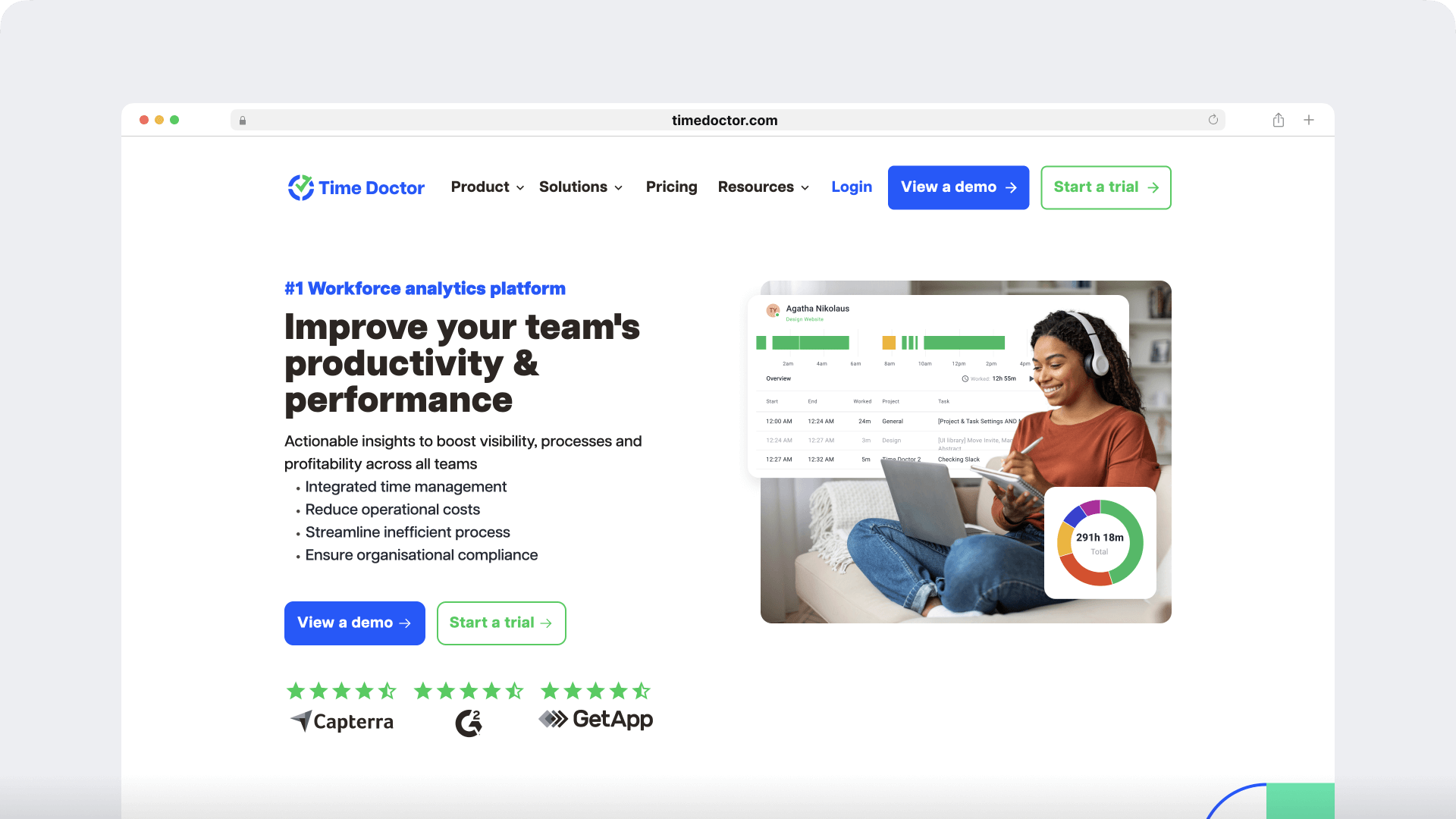42
Over the last few years, several high-profile employee data breaches have put well-known global companies in the headlines for the wrong reasons. We won’t name names – but if you’re curious, search “employee data privacy breach.”
These high-profile incidents underscored a stark reality. When data protection is weak or compromised, the consequences extend beyond legal penalties. Employee trust is shattered. Corporate reputations suffer. In some cases, lives are ruined.
Protecting employee data is not only a matter of compliance. It reflects an organization’s commitment to trust, accountability, and ethical operation.
For business leaders – whether in HR, compliance, or C-level roles – understanding and implementing employee data privacy practices is crucial for maintaining resilience and reputation.
With the stakes so high and so much changing at once, employee data privacy should be every leader’s priority for the year ahead.
Table of Contents
Employee data privacy: A quick introduction
Employee data protection refers to the practices and policies your business adopts to safeguard employees’ personal and sensitive information according to privacy regulations, internal policies and industry standards.
From recruitment to offboarding, your organization will collect, store, process and share a lot of data about an individual employee. That might include:
- Personal and contact details
- Job title, salary, and benefits
- Performance analytics
- Financial, payroll, tax, and social security details
- Disciplinary records
- Medical records and disability information
- Health insurance and injury claims
These are just some examples. There is no universal definition for “employee data” – your organization might have more, less, or different information.
What’s more important is that we’re talking about a vast and varied array of sensitive personal information. And the fact that the employee data challenge is only growing in an increasingly remote, borderless, and tech-driven business landscape. And employees’ rights related to their data, which often include the right to access, modify, or delete their personal information.
All these converging factors – increasing reliance on technology, tightening privacy regulations, employees’ rights and expectations – mean that employee data protection is a strategic challenge, not a check-box exercise.
This is what makes employee data privacy one of the top HR compliance priorities.
Now is the time to assess how your organization is meeting its ethical and legal obligations to safeguard any and all personal information collected, processed, and stored on behalf of employees.
Three reasons why employee data privacy matters
- Employee data privacy aligns with fostering a respectful workplace. Individuals should feel secure about how their information is managed.
- Recognizing and respecting employee privacy rights is essential to building trust. First and foremost with employees, but also with other stakeholders.
- Employees have specific rights related to their data. These are regulated in the same way as workplace safety standards.
There are many more risks associated with mishandling employee data. We’ll outline them a little later, or you can skip ahead to Data protection non-compliance risks.
Data privacy regulations you (might) need to know
According to the latest count from the International Association of Privacy Professionals (IAPP), 79.3% of the world’s population – more than 6.3 billion people – is covered by at least one data privacy law.
With 137 countries following national data privacy laws, to say there’s a good chance your employees are protected would be an understatement.
These regulations tend to cover areas like:
- Obtaining consent to collect employee information
- Informing employees how their data is stored, used, processed and shared
- Employees’ rights to access, modify or delete their data
- Data storage and security requirements
- Data breach policy requirements
Some of the more high-profile laws like GDPR and CCPA have served as models for newly established privacy standards and amendments to outdated regulations.
However, depending on where you do business, the applicable regulations might come with additional responsibilities that supersede even GDPR.
Like Singapore’s Personal Data Protection Act (PDPA), which mentions audit processes. Or Brazil’s Lei Geral de Proteção de Dados (LGPD), which outlines the requirement to appoint a data protection officer (DPO).
Then there are industry-specific data privacy regulations. For example, the US-centric Health Insurance Portability and Accountability Act (HIPAA) governs healthcare data handling, which can affect how employers handle health information.
Recent changes to privacy regulations
The latest IAPP report notes that, while the headline figure of 137 countries covered by data privacy laws is impressive, what’s also exciting are the evolutions happening in those countries with established regulations.
For example, countries like Switzerland, Singapore and New Zealand recently amended their data protection regulations to be “more robust and reflective of technological advancements.”
The International Labour Organization (ILO) has also weighed in on this point. In a working paper published in mid-2022, the ILO specifically calls out the risks of AI for employee data privacy.
In particular, AI tends to work counter to many of the principles of data privacy. “AI systems may be working on the premise that massive and combined data are required and applied for different purposes, linked in manners not necessarily limited, for purposes or results not yet known, while data protection relies on purpose limitation, data minimisation and transparency.”
AI’s decision-making processes also tend to be opaque, which goes against the need for transparency in data handling.
What this all means for employee data protection remains to be seen. But it’s an exciting time to be sure.
Understanding which regulations apply to your organization and how they’re evolving is essential for establishing effective data protection practices and maintaining compliance.
Data protection non-compliance risks
Failing to protect employees’ personal data isn’t just a regulatory breach. There can be severe consequences, including:
- Personal harm: Each data point your organization collects represents sensitive personal information. Mishandling puts employees at risk of identity theft, discrimination, or financial loss.
- Financial penalties: Regulatory authorities impose hefty fines for violating data protection laws, such as GDPR fines reaching up to 4% of global turnover or €20 million.
- Reputational damage: You only need to search “employee data breach” to see how privacy scandals can severely damage an organization’s reputation, leading to loss of customer trust and business opportunities.
- Legal liability: Affected individuals can and do seek compensation for damages, ranging from minor settlements to major and prolonged class action lawsuits.
- Loss of employee trust: Employees may lose confidence in the organization or leadership if they believe their personal data is not being adequately protected.
- Operational disruption: Data breaches disrupt business operations, leading to downtime and productivity loss.
- Regulatory scrutiny: Non-compliance can put you on regulators’ radars, leading to more frequent audits and investigations.
By prioritizing employee data privacy, your organization can build trust, mitigate compliance risks, and protect its reputation.
So, let’s look at the best ways to do that.
Best practices for employee data protection
Follow clear policies
Data privacy practices should always follow a clear policy that’s aligned to compliance standards and created in collaboration with employees.
Start by creating policies that:
- Clearly communicate how and why employee data is collected, stored, and used
- Define retention periods and conditions under which data will be deleted or archived
- Outline the steps to take in case of a data breach
- Detail the controls in place to protect data privacy
These policies should be easily accessible and updated regularly.
Implement strong access controls
Access control is a cornerstone of data protection.
This involves:
- Establishing clear protocols to determine who can access what data
- Using authentication methods such as multi-factor authentication (MFA) or role-based access control (RBAC)
- Regularly reviewing and updating access permissions
By restricting access to data, you can significantly reduce the risk of unauthorized access and data breaches.
Store data securely
Although cloud storage is often more cost-effective and agile, there are always additional risks when storing sensitive information on third-party servers.
Compare your cloud storage provider’s security to ensure it complies with data protection laws, offers data loss prevention, and maintains secure access management policies.
Encryption is key
Strong encryption ensures data is unreadable to unauthorized users.
Further, implementing access controls like MFA or RBAC within encrypted databases allows only authorized personnel to view or manage specific information. This minimizes the risk of accidental or malicious data exposure.
Train employees on data privacy
Many high-profile data breaches were the result of employees mishandling sensitive data.
Regular training sessions can help to prevent this from happening in your organization. Help employees understand their responsibilities in protecting sensitive information, and remind them that data protection is a shared responsibility that requires organization-wide commitment.
Training should cover topics like:
- Recognizing phishing attacks and social engineering tactics
- Understanding data classification and handling procedures
- Reporting security incidents promptly
- Protecting devices and avoiding public Wi-Fi

Make it relevant to the team or individual, including real-world scenarios and adapted material that helps to drive the message home.
Conduct regular audits and risk assessments
Regular audits help you stay compliant with legal requirements and company policies, and proactively identify potential risks.
You might choose to include employee data in broader compliance audits or establish a separate schedule specifically focusing on employees’ personal data.
These audits also serve to verify that organizational practices support employees’ rights, such as data access, transparency, and deletion.
Document the findings and corrective actions taken during each audit to maintain a comprehensive record of compliance efforts.
Implement data minimization principles
Most data privacy regulations call for “data minimization,” which essentially means collecting and processing only the necessary employee data.
Following data minimization best practices has a few flow-on benefits:
- Reduce the potential impact of a data breach
- Streamline decision-making by eliminating unnecessary data
- Reduce data bloat and database requirements
- Simplify auditing
Regularly evaluate data minimization policies and remove any information that no longer serves a legitimate business purpose.
Use security tools and tech
Tools such as firewalls, virtual private networks (VPNs), and intrusion detection systems (IDS) help to secure network traffic and monitor for unauthorized access attempts.
Together with MFA and RBAC, encryption, and data minimization, a multi-layered approach reduces your organization’s exposure to risk.
Don’t ignore security patches from trusted vendors. Regularly updating software helps to stay protected against known vulnerabilities and emerging threats.
Incident response planning
Having a well-defined incident response plan will help your organization respond effectively in case of a data breach. The plan should outline what steps need to be taken, by whom, and how quickly, including:
- Containing the breach
- Investigating the incident
- Notifying affected individuals and regulatory authorities
- Recovering from the breach
As we mentioned above, including incident response plans in a clear and accessible policy helps to underscore your organization’s commitment to doing the right thing.
How to evaluate software from an employee data privacy perspective
As with many of today’s emerging business challenges, technology provides a solution to many of your employee data protection headaches.
HR software is particularly popular. It streamlines data collection, safeguards employee information, provides transparency and access, and enables you to delete data on request.
At least, that’s the hope. The wrong software increases your organization’s risk exposure, especially when it comes to compliance standards. This goes for HR software and complementary platforms which can access employee data.
When choosing software solutions for your organization, it’s crucial to evaluate them from a data privacy perspective. Here are some key factors to consider:
Data security practices
- Does the software provider have robust security measures in place, such as encryption, access controls, and regular security audits?
- Are they compliant with relevant data protection regulations like GDPR, CCPA, and HIPAA?
Data minimization
- Does the software collect only the necessary data to fulfill its purpose?
- Are there options to limit data collection and storage?
Data retention policies
- Does the software provider have clear data retention policies?
- Are they committed to securely deleting or anonymizing data when it’s no longer needed?
Transparency and accountability
- Is the software provider transparent about its data practices?
- Do they have clear terms of service and privacy policies?
- Are they accountable for data breaches and security incidents?
Time Doctor’s commitment to data protection

As the industry-leading workforce analytics platform, we acknowledge our responsibility to uphold the data protection standards we’ve been discussing here.
Time Doctor prioritizes employee data privacy. Our software is ISO 27001 certified and fully compliant with GDPR, CCPA and HIPAA, and we maintain voluntary SOC 2 compliance.
Our security measures include data minimization, industry-leading encryption and security, regular security audits, clear and transparent data handling policies, and proactive incident response plans.
By choosing Time Doctor as part of your HR software stack, you can rest assured that your employee data is safe and secure.
Learn more about security and compliance at Time Doctor or view a demo to see all the workforce analytics features in action.

Liam Martin is a serial entrepreneur, co-founder of Time Doctor, Staff.com, and the Running Remote Conference, and author of the Wall Street Journal bestseller, “Running Remote.” He advocates for remote work and helps businesses optimize their remote teams.


